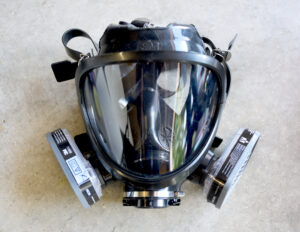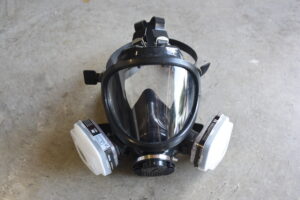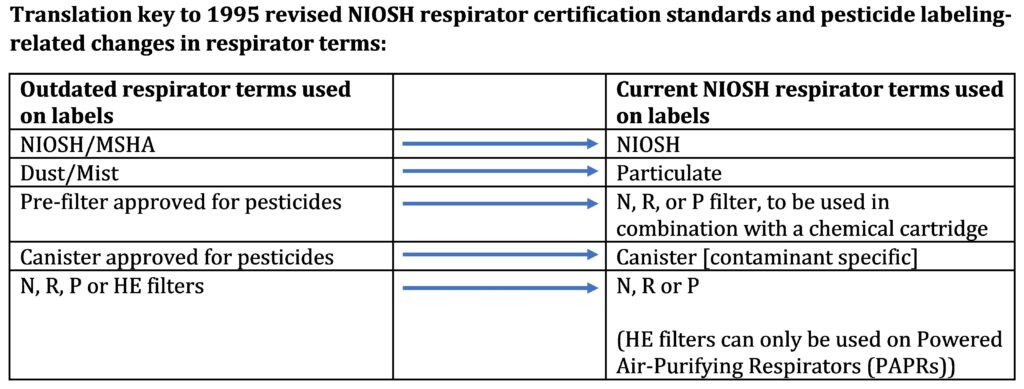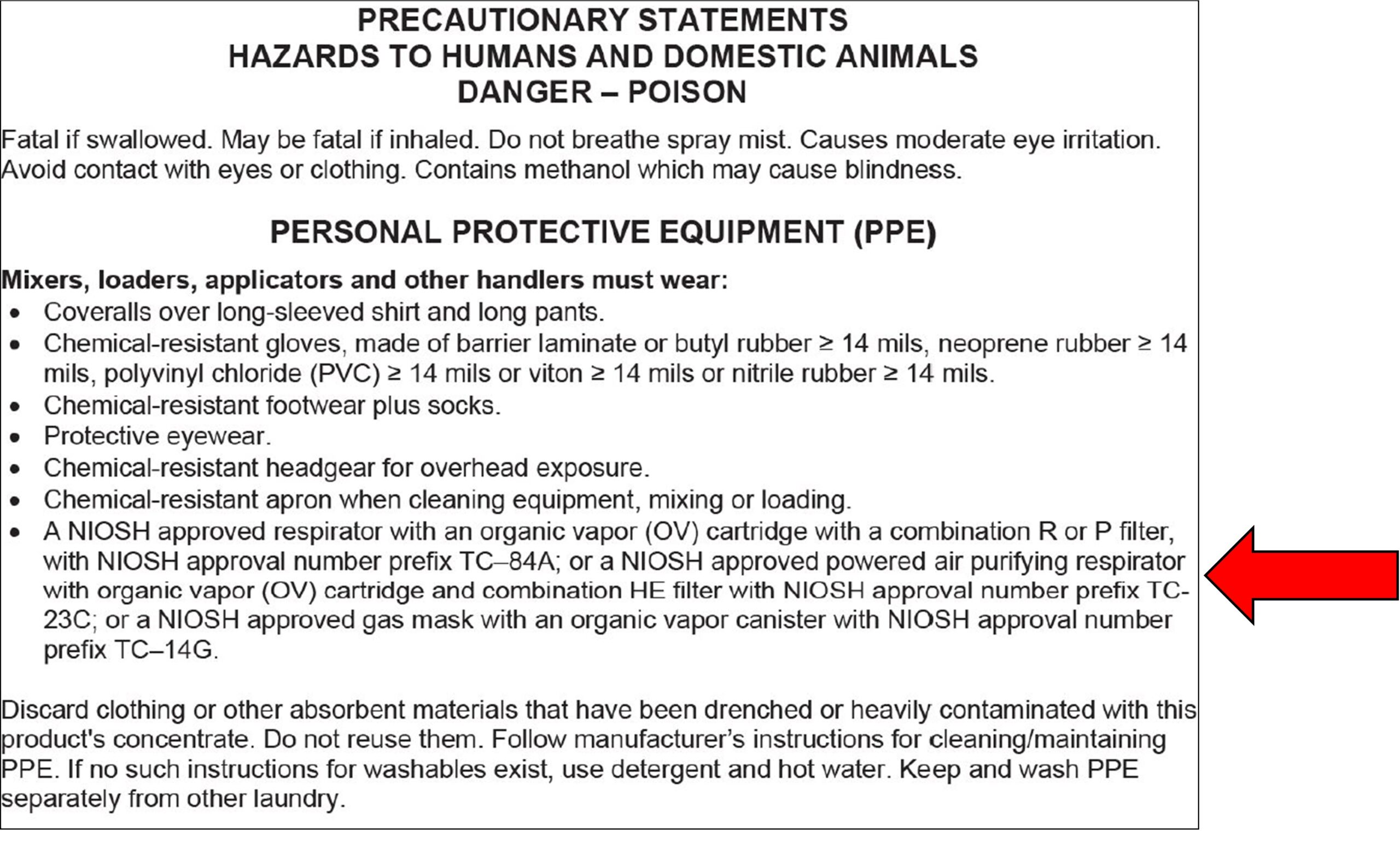Following the completion of a medical evaluation, an agricultural employer must provide the pesticide handler with a fit-test to ensure the selected respirator fits properly. The pesticide handler must be fit-tested before using the respirator. Handlers must be fit-tested for each type of respirator specified by the labeling of the pesticide product(s) they will be using. The requirement for fit-testing applies to the use of tight-fitting respirators and does not apply to the use of loose-fitting respirators.
What is a fit-test, why is it necessary, and how is it different from a seal-
check?
A fit-test determines the correct fit for a tight-fitting respirator facepiece before it is used. Because one size does not fit all, a fit-test is necessary to ensure the facepiece fits the user correctly by forming a complete seal on the user’s face that does not leak air. This also applies to filtering facepiece respirators. The fit-test is conducted annually and must follow OSHA protocols (see link below) to establish that unfiltered air cannot come around the edges of the facepiece. In contrast, a seal-check must be performed each time a tight-fitting respirator is put on to confirm it is still working properly.
Types of fit-tests
There are two types of fit-test methods: qualitative and quantitative.
-
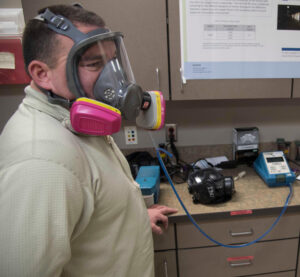
Performance of a quantitative fit-test (Image: Alamy)
Qualitative fit-tests (QLFT) involve the use of relatively simple equipment including an enclosure and one of several substances such as banana oil (isoamyl acetate), Bitrex™ (denatonium benzoate), or saccharin to test whether the user can taste, smell, or detect the substance while wearing the respirator.
- Quantitative fit-tests (QNFT) involve the use of an instrument to sample the concentration of a test agent in the ambient atmosphere and inside the user’s facepiece.
Conducting a fit-test
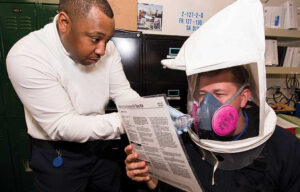
Performance of a qualitative fit-test (Image: Adapted from U.S. Navy)
In some areas, fit-tests are available through occupational health clinics and county extension. QLFT kits can be purchased from a variety of vendors. OSHA-accepted QLFT and QNFT protocols and procedures can be found in Appendix A of 29 CFR 1910.134.
The fit-test must be conducted with the same make, model, style, and size of respirator that will be used. A sufficient number of models and sizes must be made available so that the respirator is acceptable to, and correctly fits, the user. If the fit-test fails, another size or model must be selected and the test repeated.
How often must fit-tests be conducted?
Pesticide handlers must be fit-tested annually and:
-
-
- Whenever there is a change in facepiece make, model, style, or size; or
- If the handler has a physiological change that affects the facepiece’s seal on the face, such as weight gain or loss
-
What kind of fit-test records must be maintained and for how long?
Agricultural employers must maintain written records of their employees’ qualitative and quantitative fit-tests for two years. The records must include the following information:
-
-
- Name of pesticide handler tested
- Type of fit-test performed
- Make, model, style, and size of respirator tested
- Date of fit-test
- Results of fit-test
- Pass/fail for qualitative fit-tests.
- Fit factor and strip chart recording or other recording of the test results for quantitative fit-tests.
-

